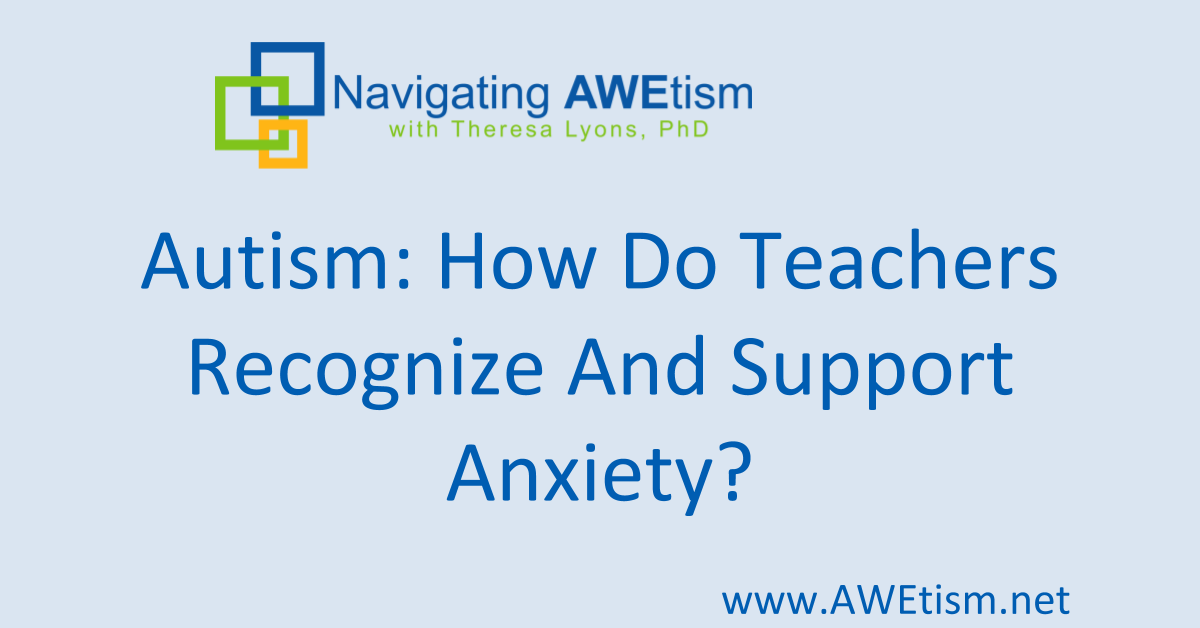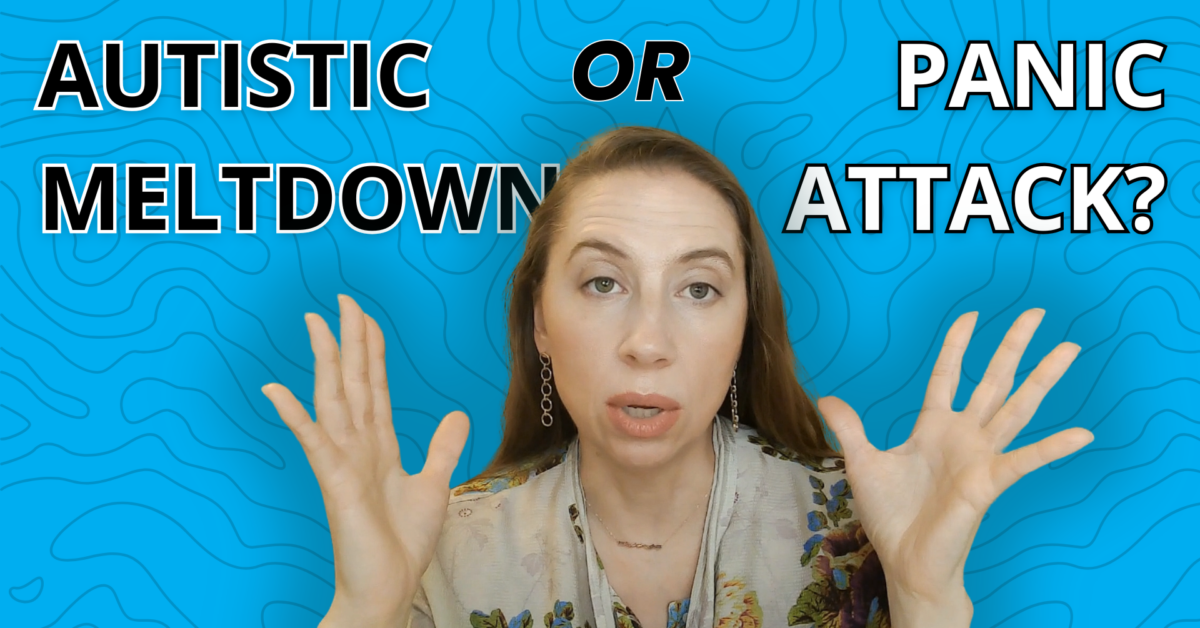Today’s blog is all about teachers, school, and anxiety.
Warning: this post is for everyone. Sometimes my blogs are for parents when they’re in the beginning stages of starting to heal autism, other times my posts are for way more advanced aspects of healing autism. This blog is for everyone and it will show you how the autism healing matrix works synergistically.
If you’re familiar with my work, you’re familiar with the autism healing matrix and these are the seven aspects of healing autism. These aspects really need to be addressed, so that you get a happy, healthy child, a child who is starting to fulfill their potential, have interest, be motivated, and all of that good stuff. That’s what we want for our kids and this is a graphical representation of how to get there.
INSAR 2020
In last week’s blog post, I talked about some new cutting edge research from INSAR 2020. That’s a research conference that, this year happened to be virtual, due to the pandemic, and last week we talked about reconceptualizing behavior outbursts in autism and the role of anxiety.
If you want to look it up, here’s the poster number: 401.058, K.M. Dudley et al.
Behavior outbursts are the leading cause of psychiatric hospitalization for those with autism, so obviously, understanding behavior outbursts and not just writing them off as “Oh, that’s just autism” or “Oh, that’s just what happens”. No, there’s a reason for behavior outburst.
So this research was looking at really understanding the role of anxiety in those actual behavior outbursts. And the results they found was it’s the first of its kind of research to demonstrate the clear importance of anxiety in impacting behavior outbursts and quality of life. Again, things in the medical field are changing. This is cutting edge research. You can see it’s the first of its kind and really understanding the role of anxiety in the cause of behavior outbursts is important. They also found anxiety directly predicted behavior outbursts. If you’re a parent you might be thinking ‘then anxiety is something important to target!’ and you’re totally right. So, behavior outbursts for your child, they’re not just happening for no reason. There’s a reason. For some, it’s anxiety.
INSAR 2020 Virtual Poster
This post is all about the school environment. The research that I’m looking at here is how are teachers recognizing and supporting anxiety in students on the autism spectrum.
This was a poster at INSAR. Poster number: 401.058, K.M. Dudley et al.
This research is exciting because there is very limited research exploring anxiety and autism in the school settings, where our kids spend the majority of their time. I know this year might be very different, people might be homeschooling more, people might be doing remote learning verses in-person, some people might be doing in-person but on a very different schedule.
Regardless of how your child is experiencing school, there is very limited research on understanding anxiety in the school setting.
The state of the current research
There is also no research documenting the strategies teachers are using to support or reduce anxiety. And this is really important to note because I know many parents struggle with anxiety and their children in school and so a teacher might be wanting to handle anxiety in a particular way. But that way might not work for your child, so trust your intuition.
There’s no research that’s really out there documenting ideal strategies for teachers to be using for those with anxiety. As a parent, trust your gut.
Anxiety is also highlighted as one of the top three factors influencing school performance. We want our kids to learn, we want them to be motivated, to be happy, to want to have a career. Anxiety can get in the way of all of that and unfortunately, behavior gets labeled as a reason for everything.
But it’s important to really look deeper, as to what is causing that behavior. How can we get ahead of it? How can we get in front of it? How can we really manage it and grow from it, rather than just throwing our hands up and saying “Oh, this kid has anxiety, I don’t know what to do!”
The Research Objective
The study was aimed to ‘document the signs of anxiety noted by teachers of students with autism.’ The study also aimed to explore the strategies that the teachers report finding useful to reduce anxiety in students with autism. Because we want to find out what really works, based upon evidence. What are teachers doing that they’re finding useful?
Methods
The research was focused on teachers of 63 students and the students were aged from 6 to 13 years of age. The teachers were asked a combination of open-ended and closed questions about signs of student’s anxiety. They were given a survey to complete and they also completed the school anxiety scale (that’s just a way to standardly measure anxiety).
So, yes there was a survey, but they’re trying to take that data and standardize it in a way that conclusions can actually be drawn upon.
Anxiety Results
Approximately half of the teachers felt their student was anxious in the classroom. Again this was felt, these are teachers, they’re not diagnosing anxiety. Half the teachers felt their student was anxious in the classroom.
And a little over a third felt their student had anxiety out in the playground. Teachers most commonly reported ‘increased activity levels’ as an indicator of anxiety in the classroom.
So when students had to break into small groups or do things on the board, any type of increased activity level in the classroom – that went with a perceived increase of anxiety of these children with autism
‘Peer interaction difficulties’ were an indicator of anxiety in the playground according to these teachers’ observations and also they found that the student withdrawing or hiding was frequently noted as an indicator of anxiety across both the classroom and the playground.
So they were really trying to understand anxiety. How is it in the classroom? How is it on the playground and when a student withdrew or was hiding, teachers felt that indicated anxiety, both in the classroom and the playground. That’s a very important result to remember.
Classroom strategy results
What works? What are these teachers doing that is working?
Most frequently the teachers said, what worked was simplified calm communication. Reduce the number of words you’re saying. Have a very calm voice. Don’t get excited and speak to the student in that manner. And then also a calm, quiet, or safe location for the child. If you recall the previous slide found as a result that when a child withdrew, the teacher assumed that, that was an indicator of anxiety.
However, the strategy here to reduce anxiety is to withdraw the child. So there’s a little bit of a catch-22 going on. In some instances it might be difficult to understand, is the child withdrawing because of anxiety, or is the child withdrawing because they’ve learned that they can withdraw! Because if an effective strategy was a calm, quiet or safe location, you’re actually teaching the behavior of withdrawing!
There definitely is a little bit of a cycle going on there, and for children with autism, we don’t want them withdrawing. Obviously, if it’s something that they need, everyone needs some quiet sometimes. But we don’t want that to be the only option when a child is feeling anxious.
There’s a lot of different ways to move through anxiety and use that anxiety as a catalyst for growth in life.
Research Conclusions
“These results highlight the importance of understanding each student’s profile of anxiety symptomatology, which may include behavioral, cognitive and/or emotional indicators.”
Basically saying, they need to understand the child more and really understand the anxiety and this relates back to the previous post about how overall health is not being factored into anxiety, into the causes of anxiety.
So again, we lead back to the autism healing matrix. If a child is experiencing anxiety, it shouldn’t only be addressed in school with either the teacher speaking calmly to them or the teacher having them put in a quiet place.
Anxiety can be addressed with modifications in diet, certain food might be causing a variety of symptoms which might cause an increase in anxiety. Some foods cause direct anxiety for certain children. There’s also the health care team aspect of the autism healing matrix. So you can start to work with a really knowledgeable doctor getting at the root cause of anxiety. And as you do that, school just becomes so much better and so much easier and the child starts laughing and smiling and learning!
That’s what you want and this is how the synergy of the autism healing matrix really helps have such improvements.
Research conclusions
“These results also document the variability and strategies being used by teachers, both across students and between settings, with few being evidence-based and some being known to increase anxiety in neurotypical children.”
Obviously that’s a problem if some teachers are using techniques to decrease anxiety, but yet it’s known to increase anxiety with neurotypical children. You would have to pause and think about that and say “Is this the best way for that teacher to handle anxiety?”
This research is really important, because it highlights the need for more research into this area. More research into how is behavior shaping, how our kids learn and where is that behavior coming from? Is it health-related, is it environmental-related? And how is it really being handled?
Let’s get some evidence-based research around that. So that anxiety does not limit our children’s ability to learn. We know they can learn, we just have to tap into that beautifulness of their ability to learn. it’s there
Conclusions
More and more cutting-edge research is concluding that it is important to treat anxiety as a potential mechanism underlying behavior outbursts in those with autism. So regardless of where the children are, whether they’re at home, whether in school when they have some type of behavior outburst, do not just say “Oh, that’s autism! That’s just the way he/she is. It’s never going to change.” It’s not true.
Look for that underlying mechanism. Go deeper, find out what the reason is. There’s always a reason, so as a parent when someone tells you something that does not make sense about your child, trust your intuition. Just trust it. That gut-feeling that you have, it takes science decades to catch up to your parenting knowledge.
Trust your gut.




